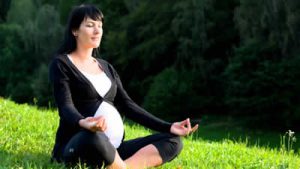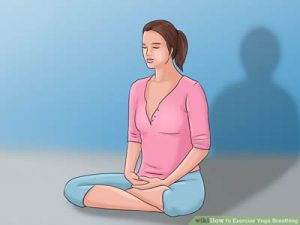By Ann Todhunter Brode
Sarah had worked with me several years ago, and now, five months pregnant, called for help with the challenge of adapting to her changing world. When she came to our appointment, her body looked gloriously healthy but her demeanor look stressed and anxious. I soon learned why.
Sarah is a smart lady who excels at everything she does. Naturally, when she became pregnant, she followed her OB’s guidelines, read what to do and not do at each specific stage, signed up for prenatal yoga and got an app to track her progress. She was set to be on top of it but this isn’t how she felt.
Like many pregnant women, Sarah understood the road map but needed to find trust for herself in unfamiliar territory. As she explained, “I feel as if I’m managing my pregnancy from a distance and can’t connect to any familiar reference points.” In the muddle of all the biological timelines, hormonal and physical changes, morphing identity, and opinions of others, Sarah had lost her sense of self. In order to be in the epicenter of her own experience Sarah needed to remember her sensible body.
To begin, we acknowledged her reliable and diligent mind, asking it to step back and observe as we set out to explore the current situation. For Sarah, as a first-time mother, conceiving and carrying a child was totally new territory and, though she didn’t feel like her old self, she was her pregnant self. Tuning in and being aware of her kinesthetic sense of space was a good place to start.
We perceive, interpret, and trust information from our five basic senses without thinking much about it. But, we’re less familiar with our sixth sense, the kinesthetic sense. This is the sense that tells you all you need to know about space: the space inside your body, the space around you and spatial relationships.
It’s key to a body-oriented intelligence and, aptly, considered by many synonymous with extra sensory perception and intuition. Introducing a pregnant woman to feeling space, body breathing, and positive messaging is an effective way to wake up and empower her kinesthetic sense. And, trusting this inner-outer sense of space is essential for the pre and perinatal journey.
As I did with Sarah, let me direct you through a few simple exercises to build kinesthetic awareness and demonstrate how it works. Even though you may not be pregnant, doing these exercises will help you embody the information so you can be informed by your experience when you share it with others. After all, learning how to stay grounded when all else is changing isn’t just for pregnancy.
Feeling Space
 Close your eyes and bring your awareness to your body and its interior space. Imagine that you’re taking a tour of your body home from the inside and observe what’s going on. Do some parts feel more familiar than others? Do you feel tension or nervous energy anywhere? Do you feel easy and at home in your chest, belly, or pelvis? Your kinesthetic assessment is as accurate as the smell of coffee or the feel of silk.
Close your eyes and bring your awareness to your body and its interior space. Imagine that you’re taking a tour of your body home from the inside and observe what’s going on. Do some parts feel more familiar than others? Do you feel tension or nervous energy anywhere? Do you feel easy and at home in your chest, belly, or pelvis? Your kinesthetic assessment is as accurate as the smell of coffee or the feel of silk.
To fully occupy and enliven all of your inner space, you may need to do a little housekeeping. Literally, take your hand and sweep away any dust or disturbance. Soften your muscles and let the tension evaporate. Take a deep breath and let in some fresh air. Use your imagination and bring in light and lightness. Bring in so much that it’s all space…. with no dense matter. To feel the contrast, alternately tighten and relax your abdominals and notice how tension changes the space. Then, allow your inner space to blend with the space around you. Can you feel your sense of self expand a bit beyond physical into space-space?
Feeling space helps the mother-to-be stay centered and connected
The kinesthetic sense helps a woman stay current throughout the pre and perinatal time of physical transformation. Due to hormonal and postural changes, recalibrating balance and knowing where she stands can feel like on-going challenges. As the center of gravity shifts, her kinesthetic body can help her structure realign over its base. Feeling centered helps her be centered. And standing tall helps her feel confident. Becoming intimate with inner-outer space is a good way to perceive conception, carrying and birthing her baby as in integrated part of the whole. For this time, her kinesthetic sense tells her that she and her baby are one.
Body Breathing
Your kinesthetic sense of space can introduce you to the anatomy of breathing… from the inside! Although the primary impetus for breathing is the diaphragm, we feel the movement in our bones and tissues. If relaxed, each breath transfers motion throughout the body. If there’s tension or unconscious holding the full movement of breath will be restricted. To observe this body breathing, close your eyes and feel how your ribs move closer together with each exhale and spread apart with each inhale. Let this mobility influence your spine, collar and pelvic bones. Body breathing is a good way to relax and connect with present time. The obvious metaphor of taking in and releasing can be applied to emotions, ideas, personal history, and relationships.
 Body breathing helps a mother-to-be relax in the moment
Body breathing helps a mother-to-be relax in the moment
As pregnancy advances and the uterus begins to crowd the front, the back and side ribs expand to allow more breathing space. Knowing and experiencing the anatomy of body breathing is a good way to get in the moment and be in present time. During pregnancy and afterwards, relaxed and easy breathing embraces both mother and child in its rhythmic flow. This creates a feeling of comfort, intimacy and oneness. During childbirth, body breathing is a vital resource that anchors a woman to her body’s intelligence and calm confidence. There’s a reason that birthing coaches encourage women to practice breathing and body-centered meditation in preparation for labor and delivery.
Positive Messaging
The intelligent body listens to every word you say, every thought you think. And, the positive or negative message has a direct impact on how you feel. To experience how thoughts influence your body, close your eyes and pile on a bunch of negatives-worry, disgust, criticism. How does the inner space feel? How easy is your breathing? Now do the experiment again and pile on the positives-hope, trust, appreciation. Did the inner space change?
Over the next few days observe the kind of messages you deliver to your body. Even if what you’re thinking seems like it’s just being truthful, replace each and every negative with a positive. Be particularly diligent with the old favorites. Sometimes these have a source in prior generations and can be passed on.
Positive messaging helps a mother-to-be and her baby feel confident and supported
Creating an optimal environment for mother and baby will ensure that they thrive. Even if circumstances are challenging, the internal space can be sacred space when an aware mother practices positive messaging. Thoughts and words have a powerful impact on the way a woman perceives the pre and perinatal experience. Because both mother’s and baby’s bodies are listening in, a pregnant woman will want to craft her inner dialogue to convey a positive message. Naturally, such awareness will impact how the mother-to-be cares for herself and walks in the world. It can also shape the way she approaches and experiences the life-changing events of birthing and being with her new born.
When Sarah tuned in and tuned up her sense of space she began to go with the flow and trust her body again. Her kinesthetic sensitivity enabled her to be in the fullness of space where the gentle movement of her breath could gather in both mother and baby- to relax and be in the moment. Here, positive messaging helped her align body, mind and spirit. In addition, awakening her inner sense of knowing and practicing kinesthetic awareness was the perfect preparation for labor and delivery. After the baby was born, Sarah’s inner sensibility was on hand to help her shift gears, embrace post partum changes, and support the emotional needs of her new born. Including her baby in the intimacy of inner-outer spatial awareness and body breathing was the perfect foundation for intimate attachment and bonding.
Ann Todhunter Brode is a body therapist and recognized master in her field. For over 40 years she has worked with people to help them understand and feel comfortable in their bodies. In addition to her acclaimed meditation CD, Body Breath (available on Amazon and iTunes), Brode is a writer for Huffington Post http://www.huffingtonpost.com/author/ann-642 and will soon publish her first book, Body Wisdom-How to Listen To, Care for & Enjoy Your Most Valuable Asset.
More information can be found at www.bodywisdomforlife.com.
Photo (1) downloaded from Meditation Music for Expecting Mothers “Eternal Mother” on Utube.
Photo (2) dowloaded from http://www.wikihow.com/Exercise-Yoga-Breathing







